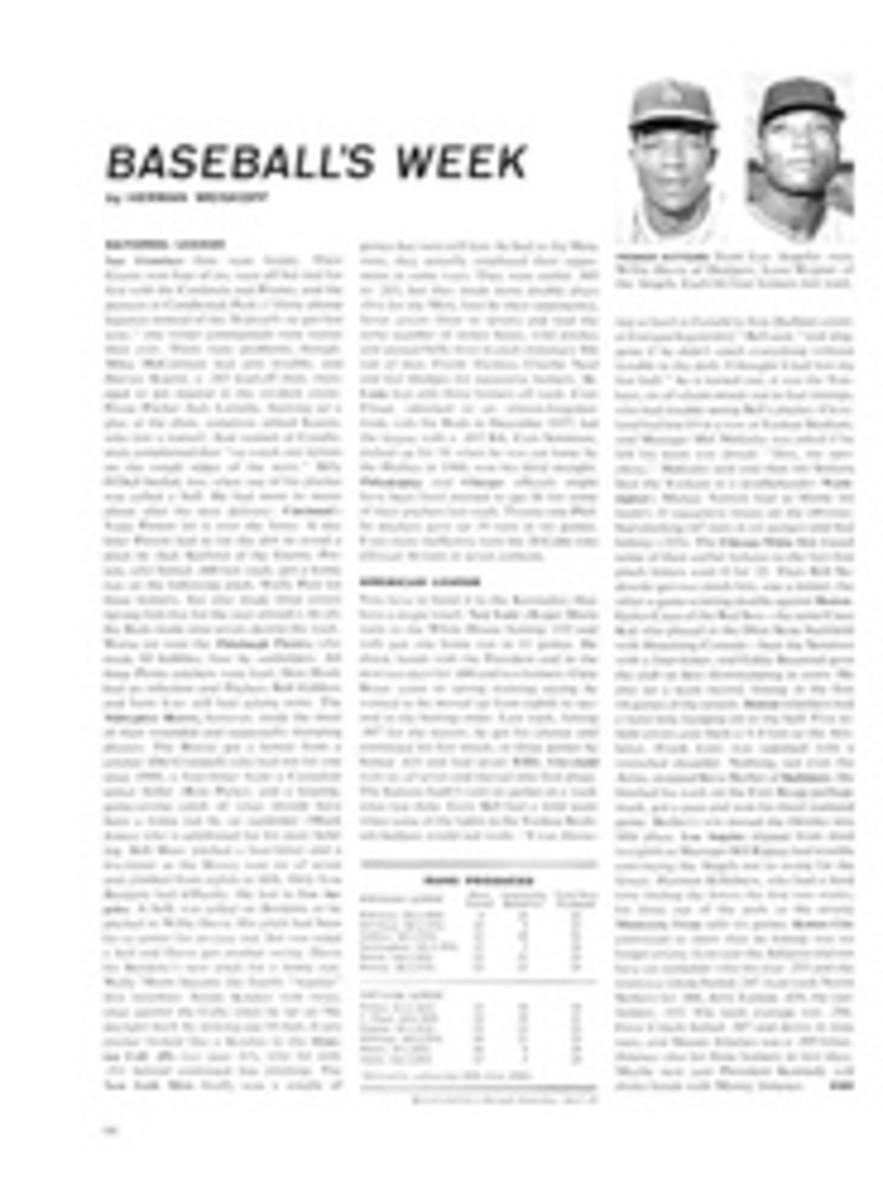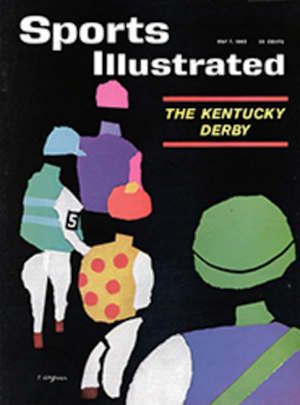
Ladies' day in the 1962 design awards
Two women who specialize in ladylike sportswear are winners of the seventh annual Sports Illustrated Design Awards. Stella Sloat, of Sloat & Co., who designs skirts so distinctive they are known simply as Sloats, receives the Sporting Look award. Elisabeth Stewart Beck, of Elisabeth Stewart Swimwear, a 5½-year-old California firm, is Designer of the Year. They will receive their trophies at an award ceremony in New York on June 6. More than 500 retailers and fashion writers voted in the annual competition, giving countrywide endorsement to the understated approach to dressing that is known these days as the Jackie Kennedy look.
Jackie Kennedy herself has been collecting Sloat skirts since her college days. A Sloat is known for its fine shaping and fabric and is a skirt distinguished by the kind of built-in fit found only in couture clothes. The fabric has a lot to do with it, and Miss Sloat goes to Scotland twice a year to pick out tweeds and other classic sportswear fabrics in exactly the right weights to hang best in skirts. She then works in the European manner, draping directly on a form. Sloat fans know that a Sloat skirt, no matter how full, will make the wearer look slim, while a slim skirt, no matter how slim, will have enough fullness for walking and sitting.
Both award winners reflect a man's point of view about business: they were both trained by fathers who were successful entrepreneurs in fashion. Stella and her two brothers, Herbie and Archie, in 1952 took over a $4 million skirt business from their father, Morris, who started a petticoat firm in 1908. Their skirts represent a steady adherence to classic simplicity from the days when "bicycle girls" wore middy blouses and all-around-pleated skirts attached to camisole tops. No matter what the fashion cycle may bring, Sloat & Co. finds excitement in it for sportswear. The current dress phase is interpreted in the Sloat line in two-piece "little nothing" dresses, which were included in the Kennedy wardrobe in 1957. Stella describes the "little nothing" look as "nothing on the hanger and everything on the girl."
The matched look in sportswear
Miss Sloat also started the matched look in sportswear with skirts that were dyed to match Pringle cashmeres. They proved so popular that they almost smothered her old favorites, the separates—couture-styled skirts and blouses, which she made popular after World War II—and this year she campaigned actively for a return to the more individual look of unmatched pieces that women can assemble to their own taste.
Bette Beck, daughter of the mighty Catalina empire, was trained by Papa Ed Stewart, who built an underwear firm into a $28 million swimsuit and sportswear business. When Stewart sold Catalina, Bette, her husband Bob and her twin brothers, David and Bill Stewart, went into business for themselves in a loft on South Los Angeles Street. That was in 1956, a year when swimsuits had gone about as far as they could go in exaggerated hourglass silhouettes. The janitor came in once a week, the rest of the time the partners swept out.
"I don't think a company should put out anything that makes anybody feel like a darn fool," says Bette, with echoes of Ed Stewart in her voice. She, her husband and her brothers forthwith proceeded to revive classic swimsuits. The women of America agreed with her. Profits from the first season went back into more sewing machines, and the business grew. Elisabeth Stewart Swimwear business has doubled every year and currently is more than $3 million annually.
As with Stella Sloat, an elegant simplicity accounted for Bette Beck's success—as she puts it, her swimsuits give women "that wonderful prosperous look." Two-piece suits were reinstated almost solely by the efforts of Elisabeth Stewart Swimwear. California breeds swimsuit ideas—and customers. "College girls buy 12 swimsuits to one cocktail dress," says Bette. "Nobody would dream of going to a Sunday pool party with just one suit—you need one to sit in and one to swim in."
The two-piece suits created the need for jackets or cover-ups because, as Bette happily explains, no lady "would go into someone's house for lunch in a two-piece suit." Stewart practically established the cover-up designed to match a suit. Next the firm turned to the middy, or chemise, look in swimsuits. A straight-hanging middy top worn over separate bra and trunks was revolutionary in 1958. Miss Stewart decided that the fitted look in swimsuits had had its day; she turned to fine-quality cottons that fit the figure as dresses do and to knitted fabrics that have made the easy, draped fit of swimsuits possible.
Bikinis? "I keep saying that we will never make bikinis, but I find as soon as I say I'll never do something I turn around and do it. Our new hip-hugger suits are cut lower, hang right on the hipbone, but what we take off the top we put on the bottom."
From the deck of Flirt, a 36-foot cabin cruiser tied up at the Balboa Bay Club, where she weekends with her husband and 4½-year-old daughter Betsie, Designer Stewart sizes up the look of her own suits (the "Newport look") and the competition (the "Vegas look") and decides where a ladylike interest in swimwear is going next. The final test is always up to the firm's president (and her husband), whose taste Bette finds admirable: "He always knows if a suit looks like us. The things he didn't like in the first place I always wish I had never made."
PHOTO
STEWART SWIMSUITS (IN BACKGROUND) WON FOR BETTE BECK
PHOTO
STELLA SLOAT DRAPES SKIRT AND STOLE

